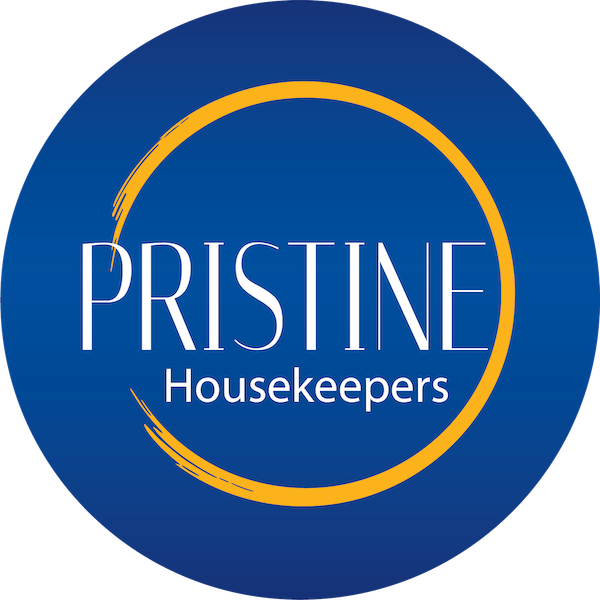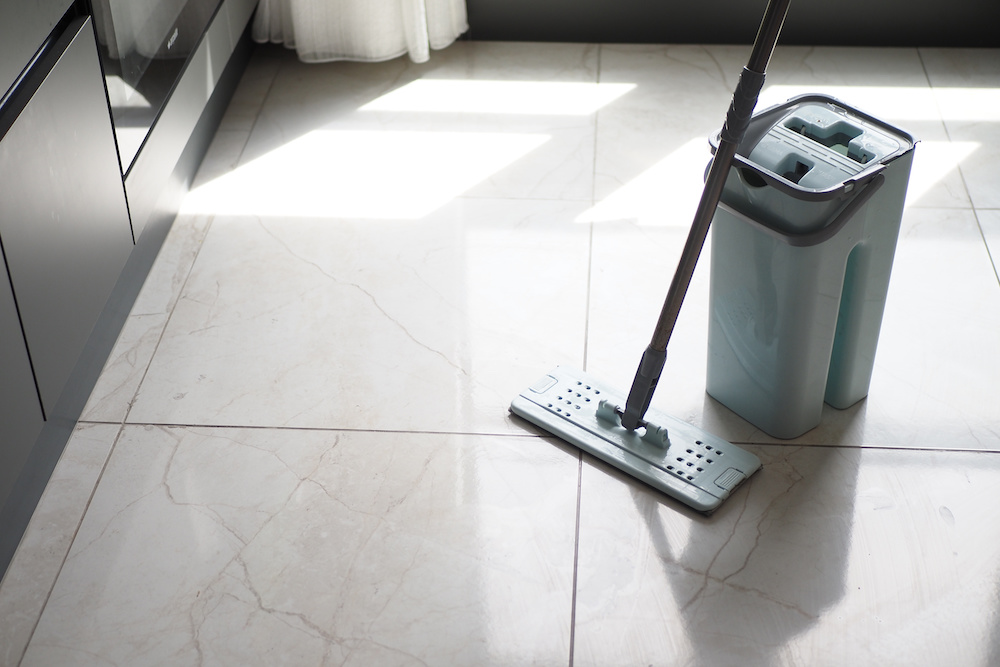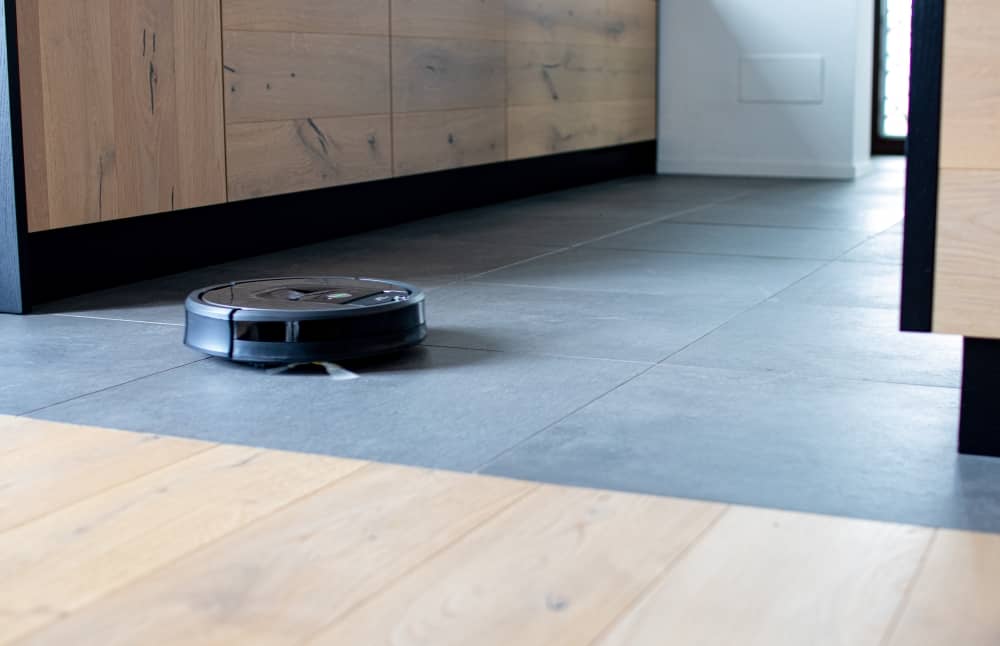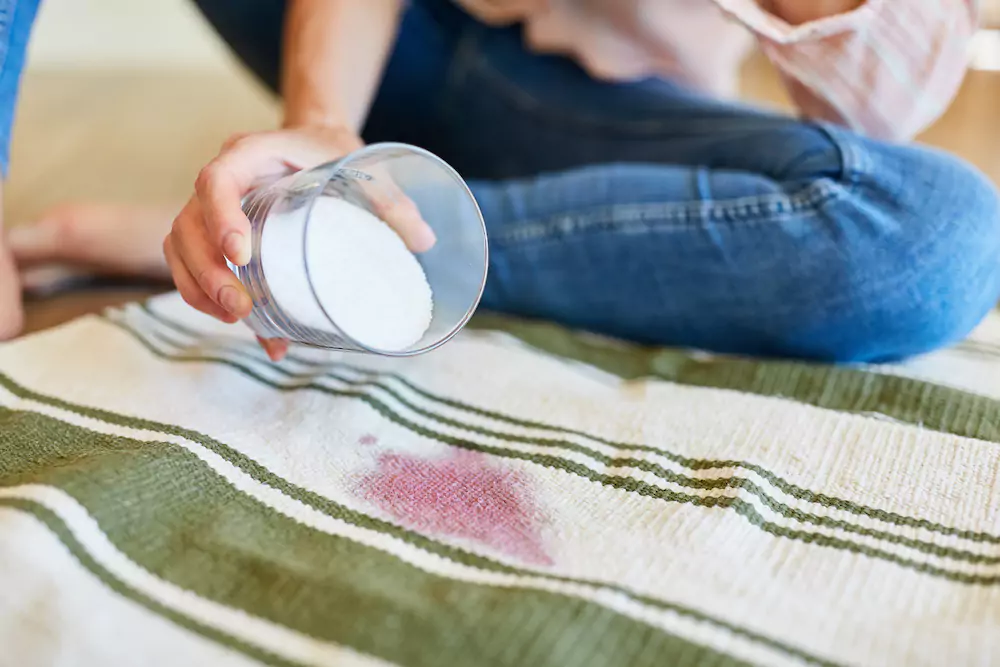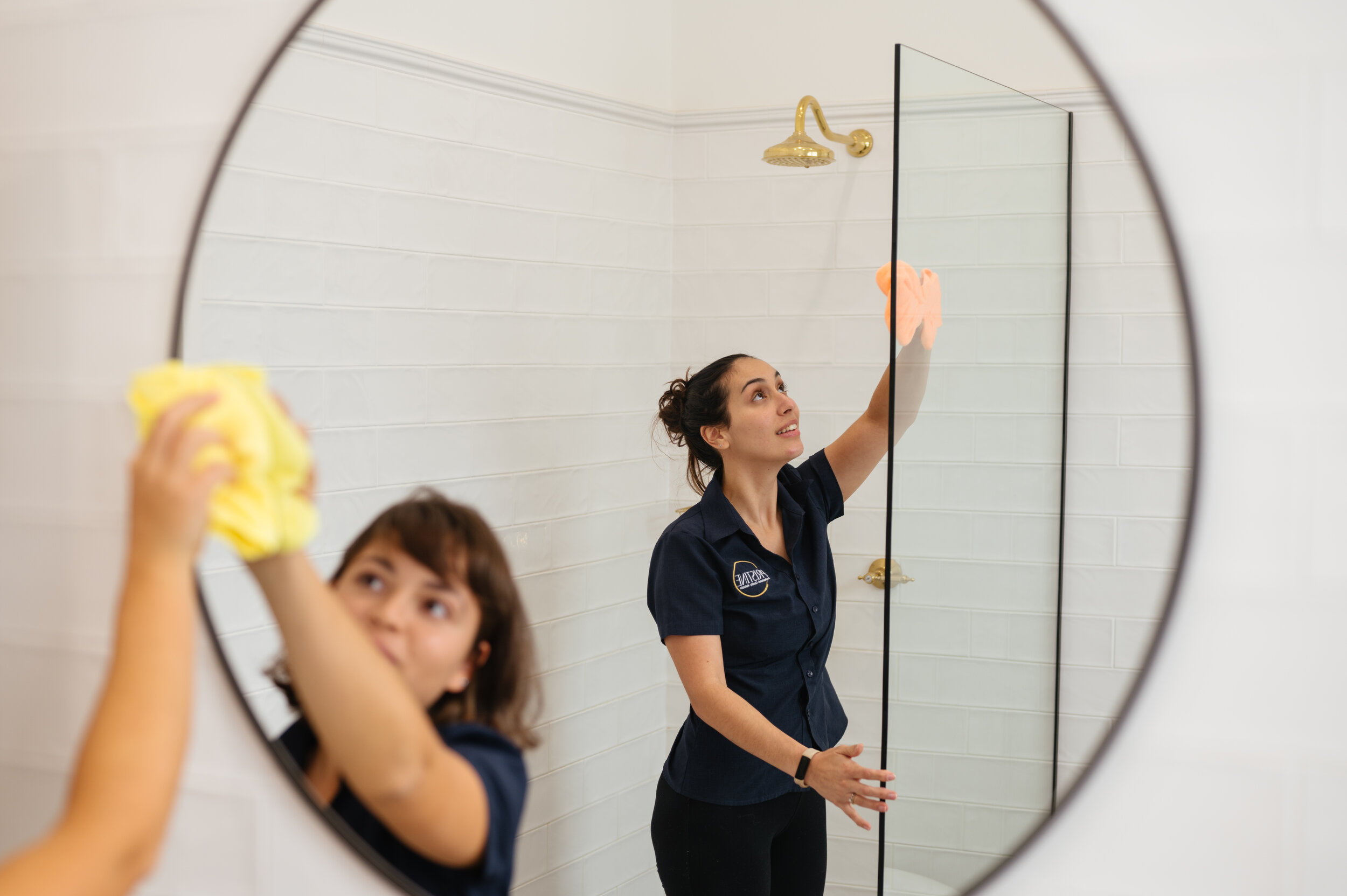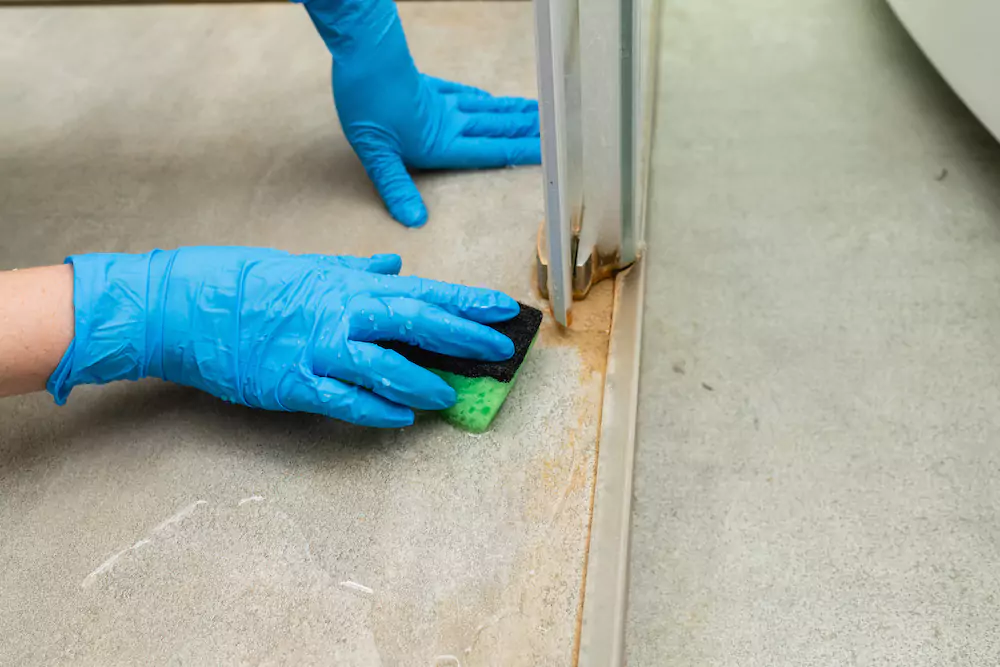With its durable nature and timeless appearance, tile flooring is a popular choice for kitchens, bathrooms, showers, backsplashes, laundry rooms, and other areas in the home that see frequent moisture or heavy foot traffic.
If you want to keep your tile floors sparkling and in great shape, I’ve put my favourite professional cleaning tips on how to remove tough stains from tiles.
In this guide, I’ll cover:
- A list of helpful equipment for cleaning tile floors
- Important considerations and prep steps before you remove stains from tile
- How to remove stains from tiles
- Tips on removing specific stains from tile
- Tips on caring for your tile floors
Helpful Equipment for Cleaning Tile Flooring
In general, it can be helpful to have these items on hand for cleaning tile stains:
- Mop
- Pail
- Cleaning cloths or rags
- Sponges
- Paper towels
- Soft-bristled scrub brushes
- Rubber gloves
- A toothbrush (this is my secret weapon for scrubbing grout)
- Broom and dustpan
- Commercial cleaning products
- Bleach
- Baking soda
- Dry eraser
- Hydrogen peroxide
- White vinegar
- An empty spray bottle
- Non-flammable paint thinner
3 Important Prep Steps Before You Remove Stains from Tiles
1. Know Your Tile Material
Is your tile porcelain, marble, stone, ceramic, or faux?
If you don’t know the answer to this, it’s time to find out before you tackle tough tile stains.
Each tile type has its own specific cleaning and care requirements that are crucial to consider before treating stains.
For instance, porcelain or glazed ceramic tiles are highly durable and able to withstand most stain-removal products or techniques. However, limestone, marble, and travertine can easily be damaged by harsh chemicals or abrasive cleaners.
These natural stone tiles require specific cleaning products that will not damage the fragile, porous surface. Even natural stain removers like vinegar may damage the surface of natural stone tiles.
If you aren’t sure what type of tile you have or how to clean it, I recommend checking with the manufacturer.
2. Start with Basic Cleaning
Basic, regular cleaning is your tile’s first defence against stains and damage.
If dirt, dust, and grit build up on tiles, they can scratch the surface. I recommend regularly vacuuming and sweeping tile floors to keep them free of debris.
Most of the time, a mix of warm water and a mild cleaning solution will be all you need to clean tile floors or backsplashes.
Before treating tile stains, always make sure the area is free of debris or dirt to avoid accidentally scrubbing it into the tile and causing scratches.
When dealing with stains on tile, start with the gentlest cleaning method first. Usually, this involves gently scrubbing the area with a plain cloth and hot water or a simple mix of hot water and a few drops of mild detergent.
If this doesn’t work, try DIY tile cleaning methods that are appropriate for the tile type or a commercial cleaning product.
3. Do a Spot Test
When it comes to ANY cleaning, I always perform a spot test if I am unfamiliar with how the product performs on a particular material. This is one of the most crucial steps in protecting the materials and surfaces in your home.
I love using vinegar as a natural DIY cleaner, but as mentioned above, vinegar can be harmful to marble or other natural stone tiles.
Before trying any of these tips on how to remove stains from tiles or using any cleaning solutions or commercial cleaners on your tile, always check the instructions on the product or specifications from the manufacturer.
How to Remove Tough Stains from Tiles
Here are my go-to tips on how to remove stains from tiles based on the type of stain.
Coffee, Wine, Tea or Juice Stains
Most coffee, tea, wine, or juice stains on tile can be treated with a simple mix of warm or hot water and mild detergent.
To make your DIY tile cleaning solution, mix mild detergent and hot water and gently scrub the stain until it is gone.
For stubborn juice, wine, or coffee stains on tile, soak a paper towel in hydrogen peroxide and let it sit on the stain. Rinse the area thoroughly with hot water and dry it completely. Repeat until the stain is gone.
Iodine
To clean iodine stains off of tile, I typically opt to use ammonia. Simply scrub the iodine stain using diluted ammonia until it disappears. Then, rinse the area well and dry it completely.
Again, always remember to check the manufacturer’s cleaning instructions and perform a spot test whenever cleaning a tile stain.
Nail Polish
For nail polish stains on tile, I usually reach for nail polish remover as my first option. If this doesn’t work, diluted bleach or hydrogen peroxide may do the trick.
Grease Stains
My favourite cleaning trick for grease stains on tile is club soda.
Simply use a mix of club soda (not flat) and hot water to gently scrub the grease stain until it is gone. The carbonation in the club soda helps break up the grease while the hot water softens the grease to easily scrub it away.
Hard Water Stains
If you have hard water and a tiled shower, you’ve probably noticed a filmy buildup on the surface.
Hard water stains on tile can be tough to clean, but here are some tips I use.
For glass tile, glazed ceramic tile, or other acid-safe tile surfaces, you can try removing hard water stains with these steps:
- Soak a sponge, paper towels, or cloth in vinegar and wipe the surface
- Allow the vinegar-soaked cloth to sit on the stain for about half an hour (or longer for especially stubborn stains)
- Wipe the area again, using gentle rubbing motions
- To amp up the cleaning power, sprinkle some baking soda onto the tile
- Gently scrub the area using a sponge dampened with warm or hot water
- Thoroughly rinse the area with plain water
- Dry the area and repeat the process if necessary
If you’ve noticed hard water stains on natural stone tile surfaces, it is best to avoid the vinegar method. Instead, find a cleaner specifically intended to be safe on natural stone tile or check the manufacturer’s instructions.
Mould and Mildew
To get rid of mould and mildew from tile flooring, I find that bleach is usually the best option.
Here are my tips for cleaning mould and mildew stains on tile:
- Mix 2 pints of water with one cup of laundry bleach (or one gallon of water to ¾ cup of bleach)
- Wear gloves and use a sponge to dab the mixture onto the mould or mildew
- Allow the bleach mixture to sit for 10 to 15 minutes
- Rub the mixture in until the mould or mildew is gone
- Rinse the area thoroughly with hot water and dry completely
If the bleach solution doesn’t get rid of the mould, you may want to try a commercial product meant for removing mould and mildew from tile.
Ink Stains Or Permanent Marker Stains
There are a few different methods for tackling ink or permanent marker stains on tile. It may take some experimentation to find an effective method, but here are three options to try:
- Diluted Bleach: Soak a clean cloth with diluted bleach and allow it to sit on the stain. Rinse the area well and dry it completely.
- Hydrogen Peroxide or Oxygen-Based Cleaner: Saturate a cloth with hydrogen peroxide or an oxygen-based cleaner and allow it to sit on the stain. Rinse the area thoroughly with warm water and dry.
- Dry Eraser: A dry eraser can be effective for removing permanent marker stains from tile.
Rust Stains
Because of frequent water exposure, rust stains are fairly common near metal surfaces in tile showers.
To get rid of rust stains on tile, here is my go-to method:
- Mix equal parts borax and lemon juice
- Apply the paste directly on the rust stain
- Gently rub the paste in
- Once the paste dries, rinse it away
- Dry the area thoroughly with a clean cloth
- Repeat if necessary until the rust is gone
Blood Stains
For blood stains on tile, grab your rubber gloves and bleach and try these steps:
- Fill a bucket with ten cups of hot water and one cup of bleach
- Mix the solution thoroughly, taking care to maintain proper ventilation and keep kids and pets away
- Pour the diluted bleach solution on the stain or use a spray bottle to spray it directly onto the stain
- Wipe the area with paper towels, an old towel, or cloths
- Repeat again but leave the solution on until it evaporates this time
This process will disinfect the area and may even get rid of the blood stain in some cases. If the blood stain persists, proceed with these steps:
- Rinse the area with water to completely remove any traces of bleach solution
- Place a cloth soaked in hydrogen peroxide on the stain
- Allow the hydrogen peroxide to sit on the stain for several minutes
- Rinse the area with warm or hot water
- Dry thoroughly
Tar, Wax, or Gum Stains
To clean tar, wax, or gum tile stains off of tile:
- Grab a plastic baggy and fill it with ice cubes or get an ice pack
- Lay the baggy or ice pack on the stain
- Once the gum, wax, or tar hardens, use a silicone-tipped stick or craft stick with a blunt edge to carefully remove as much of the substance as possible
- If any residue remains, you may want to try removing it with a nonflammable paint thinner
- Take care to avoid getting any paint thinner on the grout
- Rinse the area with water and dry thoroughly
Paint
For paint stains on tile, the sooner you treat it, the better.
- To clean oil-based paint stains on tile — Dip a cloth in turpentine or non-flammable paint thinner and place it on the stain. After letting it sit for 10 minutes and then use a soft-bristled brush to scrub the area. Rinse the area thoroughly and dry completely.
- To clean water-based paint stains on tile — A simple mix of mild detergent and warm water should easily tackle water-based paint stains on tile.
Tips on Caring for Tile Floors
Here are some of my favourite tips for protecting your tile floors:
- Regularly clean your tile floors to prevent dirt and moisture from accumulating
- Wet mop bathroom tile floors at least once a week and every two weeks in the kitchen
- Sweep or vacuum tile floors regularly to prevent dirt and debris from building up
- Avoid acidic or harsh cleaners, especially on natural stone tiles
- Always check labels on cleaning products first to make sure they are compatible with your tile flooring (when in doubt, you can check with the flooring manufacturer)
- Do a spot test before trying a new cleaning product or technique on tile floors or backsplashes
- Avoid cleaning tile with steel wool pads, wire brushes, or hard bristle brushes as they can cause scratches
- Always wipe up any spills immediately to prevent discolouration on your tile
- Remove your shoes in the house to protect your floors and prevent scratches on the tile
- After cleaning, dry your floor immediately and thoroughly
- Avoid using oil-based cleaners on tile floors as it can lead to a film that makes the floor dangerously slippery
Leave the Tile Stains and Hard Work to Us
I hope you found my tips on how to remove stains from tiles helpful! You can also check out my last blog post for more cleaning tips and tricks: Housekeeper Hacks: Tips from a Professional Cleaner.
Tired of trying to figure out how to remove tough stains from tile? Leave the hassle to us!
Our entire goal is to make your life easier and let you enjoy the peace of mind that comes from a clean, organised home.
If you just don’t have the time to keep your tile floors or backsplash clean or are having trouble with a particularly tough stain, don’t hesitate to give our team of Perth cleaners a call.
We have the experience and equipment to tackle tough stains and make your home sparkle again. Contact us to learn more about our general or deep cleaning services or to book a free consultation with one of our expert cleaners at Pristine Housekeepers.
